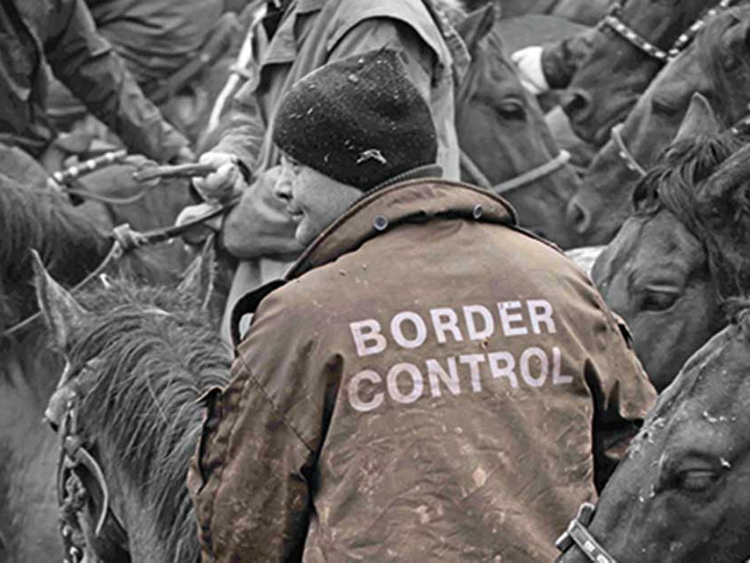
Well-known Kazakh artist Said Atabekov’s exhibition in Dubai, 66Lbs celebrates the ancient nomadic tradition of Kokpar, a game played on horseback where two teams compete to carry the carcass of a headless goat over the goal line. The show, curated by Irina Bourmistrova, features photographs, videos and installations that capture the drama and excitement of Kazakhstan’s national game. The title of the show refers to the mandatory weight of the carcass used in the game.
The origins of Kokpar can be traced to the time when nomadic horse riders fought against the army of Alexander the Great. The game is also associated with Genghis Khan. In those days when battles were fought by soldiers on horseback, playing the game was a way for troops to keep fit and battle ready while also learning strategies of teamwork, alliance building, survival, and success.
Hence, Atabekov’s images of this ancient game are relevant to contemporary times in the context of the power games that are being played in his region and globally since the end of the Soviet empire.
Atabekov is one of the leading contemporary artists in Kazakhstan. In the 1980s, he was a founding member of the Kyzyl Traktor Group, the first avant-garde art collective in the country; and after Kazakhstan became independent in 1991, he was amongst the new generation of artists, who began the process of shedding Soviet influence and creating a new art rooted in Kazakh culture.
The game of Kokpar has always been a popular theme for Kazakh artists with the dramatic scenes of players on horseback chasing the headless carcass and leaning to pick it up with their bare hands, being painted in the style of battle scenes. In his series, Wolves of the Steppes, Atabekov follows this tradition by reintroducing the once popular genre of battle scenes with horses into contemporary art, depicting the power of the specially trained horses, the masculinity of the brave participants and the teamwork involved in the game.
But unlike traditional artists, he does not look at the game as an outsider peacefully painting in his studio. He becomes part of the game. Like a true nomad, he is in the middle of the rough and violent games, capturing with his camera the intensity of the frantic action, the passion and strong emotions of the players, and the chaos and thrill of the game.
He has taken some of the photographs and videos dangling from a crane, showing aerial views of the proceedings with a mass of riders colliding with each other, ignoring the injuries and pain in their pursuit of the 66 lbs carcass.
Interestingly the carcass itself is not seen in his images but its presence and the lure of the huge prizes offered to the winners is strongly felt in every frame. In other images of individual riders, he has captured their fearless attitude, their close relationship with their horses and moments of calm contemplation with the vast Steppes in the background.
Atabekov has also highlighted the changes that are taking place in this ancient tradition, due to the encroachment of globalisation by focusing on the traditional ornaments worn by the players and the names of international soccer clubs, racing teams, and brands of cars, beverages and other products emblazoned on their shirts. His saddle-shaped installations, covered with rhinestones, and bearing the logos of international brands also underline this modern element in nomad culture.
Jyoti Kalsi is an arts-enthusiast based in Dubai.
66 Lbs will run at Andakulova Gallery, in DIFC until May 12.













